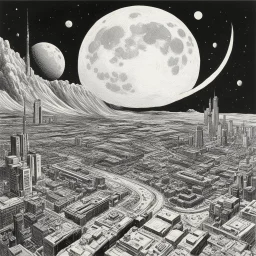

@generalpha
Prompt
This drawing uses a one-point perspective, meaning that the objects' faces parallel the viewer and converge at a single vanishing point on the horizon line. Do it. It's simpler than you think - just pay attention to the 20-step guide and, if needed, watch the video below. Begin by lightly drawing a horizontal line in the middle of your paper. It will be the base of the tower and should be about six inches long if using a 12-inch sketchbook; Divide this line into thirds and lightly make small m
statue, doubles, twins, entangled fingers, Worst Quality, ugly, ugly face, watermarks, undetailed, unrealistic, double limbs, worst hands, worst body, Disfigured, double, twin, dialog, book, multiple fingers, deformed, deformity, ugliness, poorly drawn face, extra_limb, extra limbs, bad hands, wrong hands, poorly drawn hands, messy drawing, cropped head, bad anatomy, lowres, extra digit, fewer digit, worst quality, low quality, jpeg artifacts, watermark, missing fingers, cropped, poorly drawn
1 year ago
Model
SSD-1B
Guidance Scale
7
Dimensions
4096 × 4096

![a demon knocks at the door [A scene viewed through a door peephole, circular fisheye lens distortion, soft dark vignette around edges, slightly warped perspective, as if looking through a small aperture]](https://img.stablecog.com/insecure/256w/aHR0cHM6Ly9iLnN0YWJsZWNvZy5jb20vMGMxMGYxYjItMzI2MS00ZjYzLWJmMmMtNzliZTI4MzMxYjlkLmpwZWc.webp)
![[An ink drawing by Musashi] the material form is no different from the void of shapeless emptiness; the material form is the same as emptiness, and emptiness the same as the material form.](https://img.stablecog.com/insecure/256w/aHR0cHM6Ly9iLnN0YWJsZWNvZy5jb20vNjQ1ZjE4NDMtNzNhNi00N2M2LTk5ODgtYmNmZjk1NDg4MTcwLmpwZWc.webp)






![[a pen sketch with a lot of strokes in stippling] a man in a library surrounded by](https://img.stablecog.com/insecure/256w/aHR0cHM6Ly9iLnN0YWJsZWNvZy5jb20vMDhlMTM4NjctOGM0NC00ZTBmLTg4ODktMGNiZmVjNWU2NjA1LmpwZWc.webp)

![[art by David Hockney] the longest toilet paper in the world, in Charlie's chocolate factory](https://img.stablecog.com/insecure/256w/aHR0cHM6Ly9iLnN0YWJsZWNvZy5jb20vN2VhMDU0OTktNmY1Yy00NmY2LTg3MTQtZThjYTA0MTgwNGY1LmpwZWc.webp)